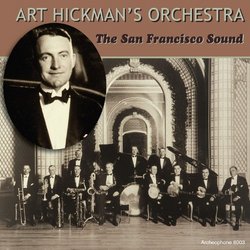Brilliant dance band sides!
Lee Hartsfeld | Central Ohio, United States | 10/31/2004
(5 out of 5 stars)
"If only Art Hickman had gotten his wartime Victor label contract--his records would have sounded so much better. Unfortunately, dance collectors must contend with the mushy sonics of late-teens and early-1920s Columbia label engineering. The Archeophone label has done an outstanding audio-restoration job, coaxing every last possible detail from these fuzzy, distant-sounding recordings and bringing the all-important percussion front and center. This is as clear as these things are ever going to sound, probably. Certainly, these tracks make it clear that Hickman was quite far ahead of his game--behold the Paul-Whiteman-esque arrangements; jazz romps that would have sounded at home in the mid-1920s (imagine this band in front of a microphone); a balance of disciplined playing and discreet improvisation; and tricky, often up-tempo, arrangements requiring virtuoso skills. His wasn't the only good dance orchestra of the pre-Whiteman period, but he raised the bar forever, virtually guaranteeing that the 1920s would be a period of first-rate scoring and musicianship. Hickman's Whiteman-esque sound may have resulted from the presence of Whiteman's chief arranger (and "Grand Canyon Suite" composer) Ferde Grofe. However, the booklet cites a lack of concrete evidence for Grofe's involvement. Interestingly, Grofe himself stated, in a popular music article, that he had been with Hickman in 1919 in the capacity of pianist and arranger. If this is true, it would explain much. At any rate, Hickman's sound is the sound we normally associate with the 1920s, and astonishingly so. Hickman's own "Rose Room" is rendered in a fairly interesting arrangement; this piece was the jazz-jam vehicle of choice in the pre-"How High the Moon" era, owing to its constant harmonic motion and the chorus' lovely I to IV key change. Such perpetual-motion exercises make ideal ad-lib vehicles (think "Tea for Two"). The two "Blues" titles are very traditional jazz treatments that sound uncannily like the mid-1920s recordings of Whiteman, Fred Waring, and others. In fact, they are smoother renditions of the type of scores being performed by such African-American Hickman contemporaries as Wilbur Sweatman and W.C. Handy. There's a great deal of history packed into one volume here, and with each listen, it becomes obvious that the so-called Jazz Age of popular music started a lot earlier than the 1920s."


 Track Listings (25) - Disc #1
Track Listings (25) - Disc #1